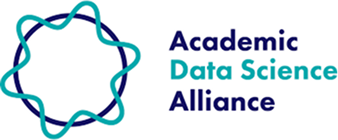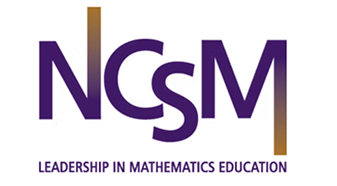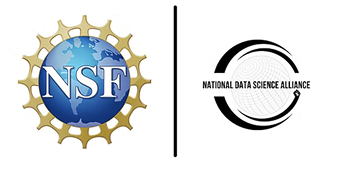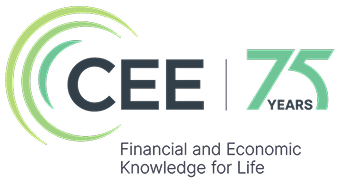Sense-making with visualizations
Practice creating visualizations to summarize many things at once, relationships between things in one place, or exceedingly complex ideas in one place. Recognize that visuals can be more efficient or compelling than other forms of communication.
K–2 Competencies
Create data visualizations to represent an aspect of the student's daily life. e.g., draw a map of the playground and stick figures to represent each student's favorite apparatus
Create bar graphs and picture graphs to represent a small data set. e.g., whole number scales, concrete situations
Classroom resources
K-2 Sorting Toys
The purpose of this lesson is to introduce students to data collection, organization, and analysis through a hands-on survey about toy preferences. Students will learn to categorize data, create visual representations, and draw conclusions from their findings.
K-2 Favorite Fruit Case Cards
The purpose of this lesson is to teach students how to collect, organize, and analyze data using multiple attributes through the creation of "case cards." Students will explore fruit preferences while learning to categorize data using various criteria and make comparisons across different characteristics.
Data Science Starter Kit Module 5: Telling the Story - Visualization and Communication
Welcome to the culminating skill of data science—communicating your findings effectively so others can understand and act on them! This module focuses on how to create clear visualizations and compelling narratives that make data accessible and meaningful to different audiences.🔗
Visualization and Communication isn’t about creating fancy graphics or impressive presentations. It’s about developing the empathy and clarity to think, “How can I help others understand what this data means and why it matters to them?” The best data science in the world is useless if it can’t be understood and applied by the people who need it.
3–5 Competencies
Create data visualizations to summarize categorical data.
Display groups or categories in visualizations using complementary or contrasting colors to highlight differences.
Display continuously scaled data in visualization using shading.
Classroom resources
Data Science Starter Kit Module 5: Telling the Story - Visualization and Communication
Welcome to the culminating skill of data science—communicating your findings effectively so others can understand and act on them! This module focuses on how to create clear visualizations and compelling narratives that make data accessible and meaningful to different audiences.🔗
Visualization and Communication isn’t about creating fancy graphics or impressive presentations. It’s about developing the empathy and clarity to think, “How can I help others understand what this data means and why it matters to them?” The best data science in the world is useless if it can’t be understood and applied by the people who need it.
6–8 Competencies
Create data visualizations that use multiple variables.
Create a data visualization, collect feedback from the target audience, and revise the visualization based on feedback.
Create map visualizations to display location data. e.g., events at certain spots on a map, data by state or region
Classroom resources
Biodiversity Snapshot by DataClassroom
The purpose of this lesson is to help students create effective data visualizations to communicate conservation stories and understand how Indigenous communities use data science to protect biodiversity. Students will analyze camera trap data from the Peruvian Amazon, create multiple visualization types to reveal biodiversity patterns, and craft data stories that connect scientific findings to real-world conservation efforts and cultural preservation.
Middle School Drought Analysis
The purpose of this lesson is to develop students' data literacy skills through analyzing real drought data from their state or region. Students will explore climate patterns, create visualizations, draw evidence-based conclusions, and communicate findings effectively while learning to evaluate data sources, identify patterns, and understand the ethical implications of data analysis.
Data Science Starter Kit Module 5: Telling the Story - Visualization and Communication
Welcome to the culminating skill of data science—communicating your findings effectively so others can understand and act on them! This module focuses on how to create clear visualizations and compelling narratives that make data accessible and meaningful to different audiences.🔗
Visualization and Communication isn’t about creating fancy graphics or impressive presentations. It’s about developing the empathy and clarity to think, “How can I help others understand what this data means and why it matters to them?” The best data science in the world is useless if it can’t be understood and applied by the people who need it.
9–10 Competencies
Use computer-based analysis tools to make basic descriptive summaries of a dataset. e.g., bar charts, histograms, line graphs, scatterplots
Quickly or informally estimate relationships visually by adding lines of best fit with a computer-based tool.
Classroom resources
Who is the Data MVP of the NBA? by DataClassroom
The purpose of this lesson is to help students create sophisticated data visualizations to analyze NBA player performance while critically examining how data-driven arguments compare to human judgment in decision-making contexts. Students will use FiveThirtyEight's RAPTOR statistics to build evidence-based cases for MVP candidates, then evaluate the limitations of data storytelling when complex human factors influence real-world decisions
Data Science Starter Kit Module 5: Telling the Story - Visualization and Communication
Welcome to the culminating skill of data science—communicating your findings effectively so others can understand and act on them! This module focuses on how to create clear visualizations and compelling narratives that make data accessible and meaningful to different audiences.🔗
Visualization and Communication isn’t about creating fancy graphics or impressive presentations. It’s about developing the empathy and clarity to think, “How can I help others understand what this data means and why it matters to them?” The best data science in the world is useless if it can’t be understood and applied by the people who need it.
11–12 Competencies
Create data visualizations that illustrate complex bivariate relationships. e.g., exponential, quadratic
Edit data visualizations to optimize it for your intended audience and the audience's different needs. e.g., "chartjunk" can be distracting for some audience but necessary for others
Classroom resources
Too Old to Mango? by DataClassroom
The purpose of this lesson is to help students master professional-level data visualization and communication skills by analyzing agricultural research data on mango tree productivity across different ages. Students will create publication-quality visualizations, conduct statistical analysis, and communicate findings to diverse stakeholders in ways that can influence agricultural policy, economic decisions, and global food security strategies.
Data Science Starter Kit Module 5: Telling the Story - Visualization and Communication
Welcome to the culminating skill of data science—communicating your findings effectively so others can understand and act on them! This module focuses on how to create clear visualizations and compelling narratives that make data accessible and meaningful to different audiences.🔗
Visualization and Communication isn’t about creating fancy graphics or impressive presentations. It’s about developing the empathy and clarity to think, “How can I help others understand what this data means and why it matters to them?” The best data science in the world is useless if it can’t be understood and applied by the people who need it.
Advanced Competencies
Demonstrate presentation skills to fully communicate depth and breadth of a visualization to an audience.
Present both 1) basic visual summaries of the data2) additional visualizations that “go deeper” into the story the data is telling, and relationships discovered within the data visualizatione.g., new relationships within subsets, significant outliers, complex or overlapping control variables
Classroom resources
Support other teachers by sharing a resource
Do you have a lesson plan, video, or tip that could help others teaching this topic?
Share feedback on the Learning Progressions
Your feedback helps us improve these progressions for teachers around the world. Thank you!
Share feedback on the Learning Progressions
Your feedback helps us improve these progressions for teachers around the world. Thank you!
Share a classroom resource
Suggesting a resource helps students around the world learn essential data science skills.








.png)














